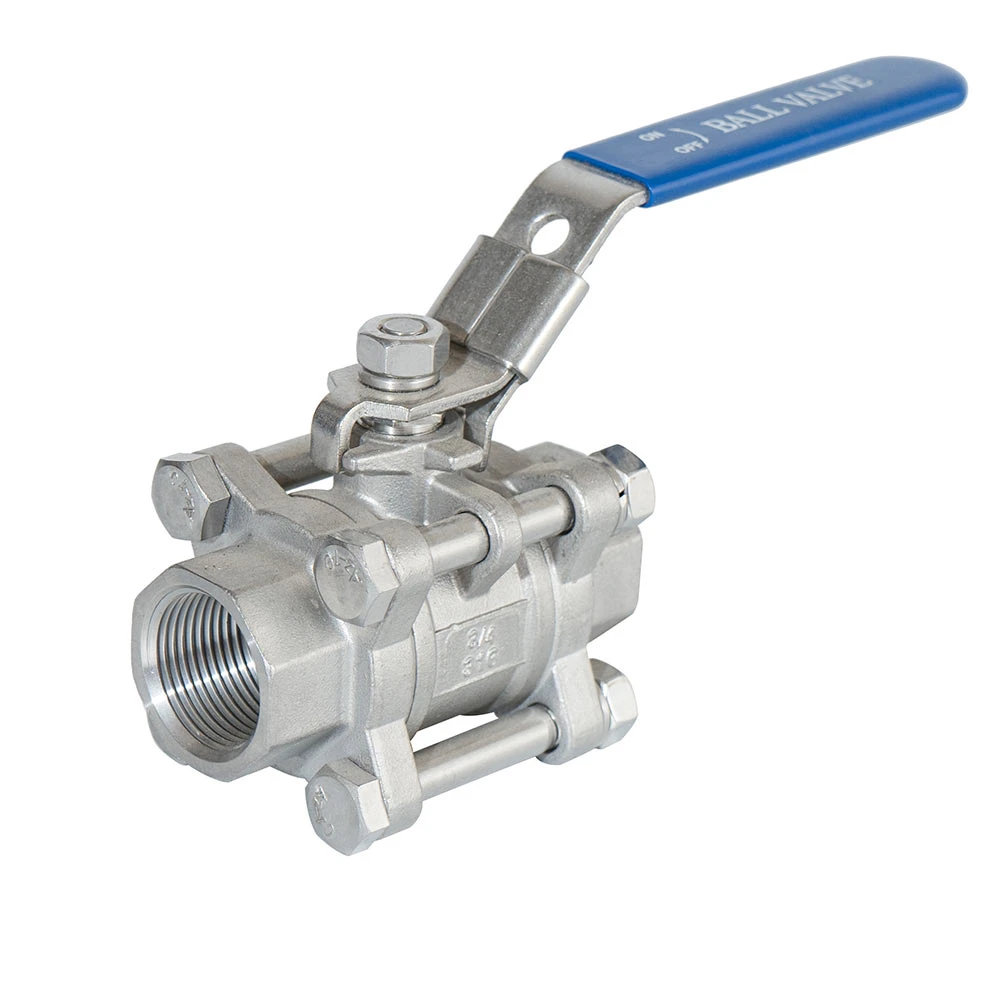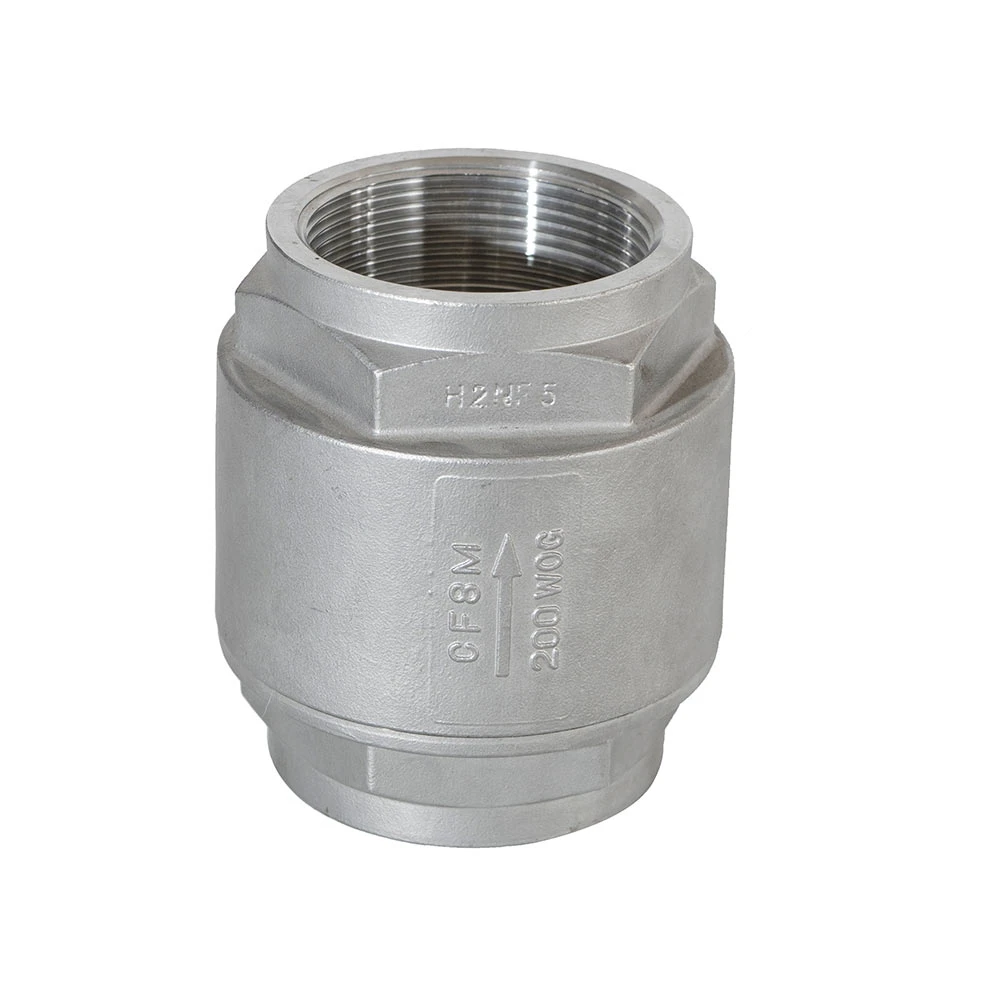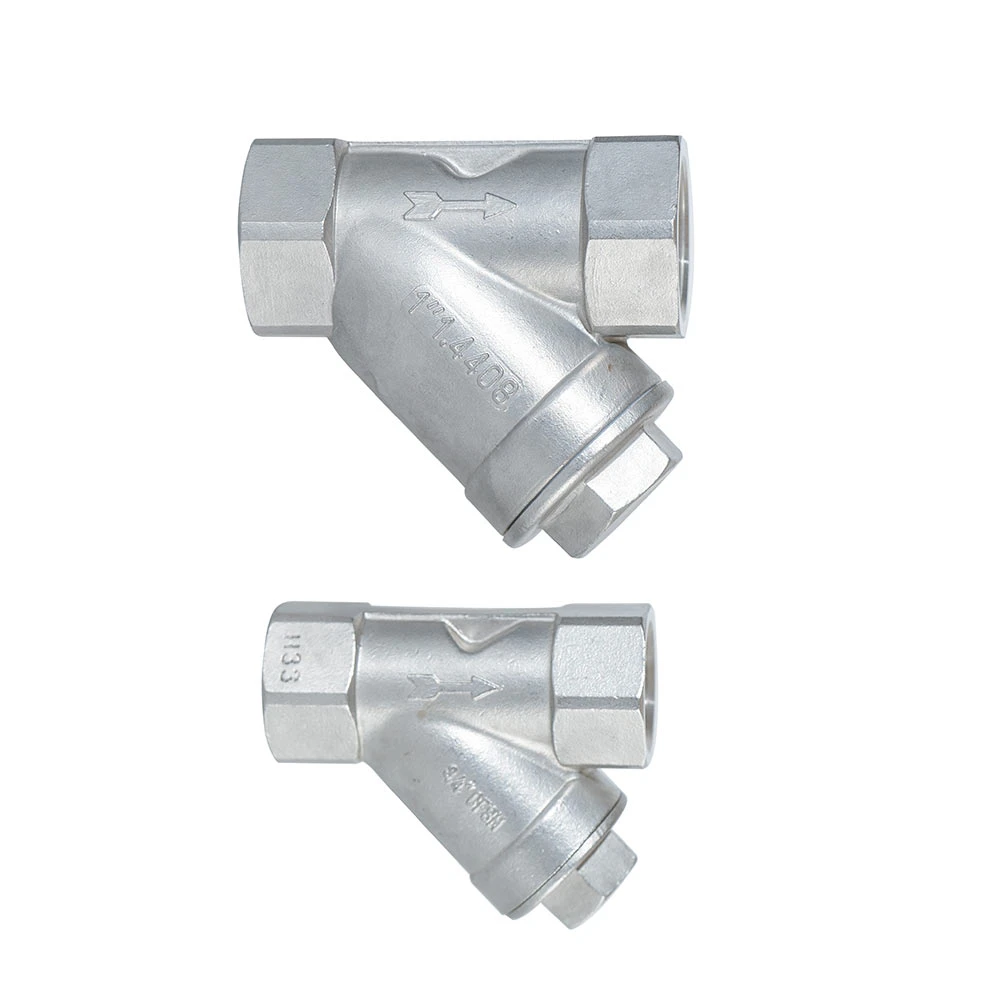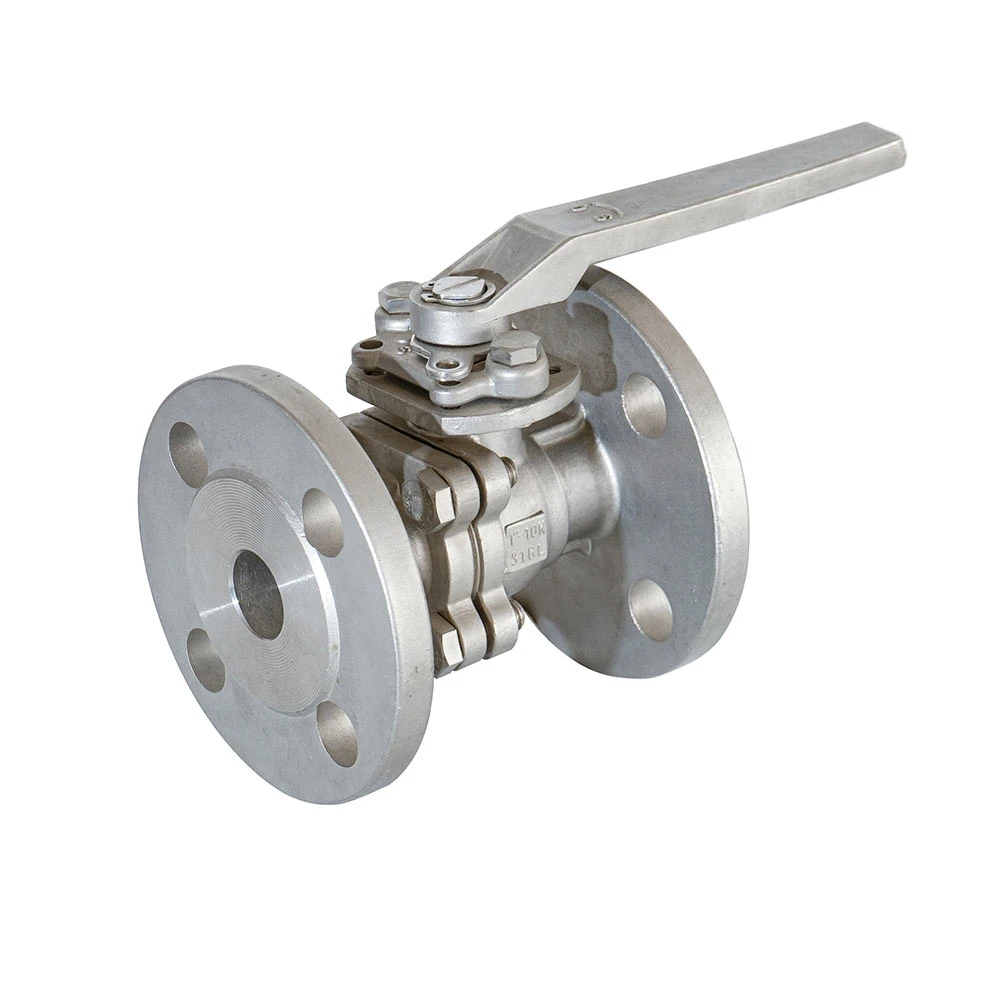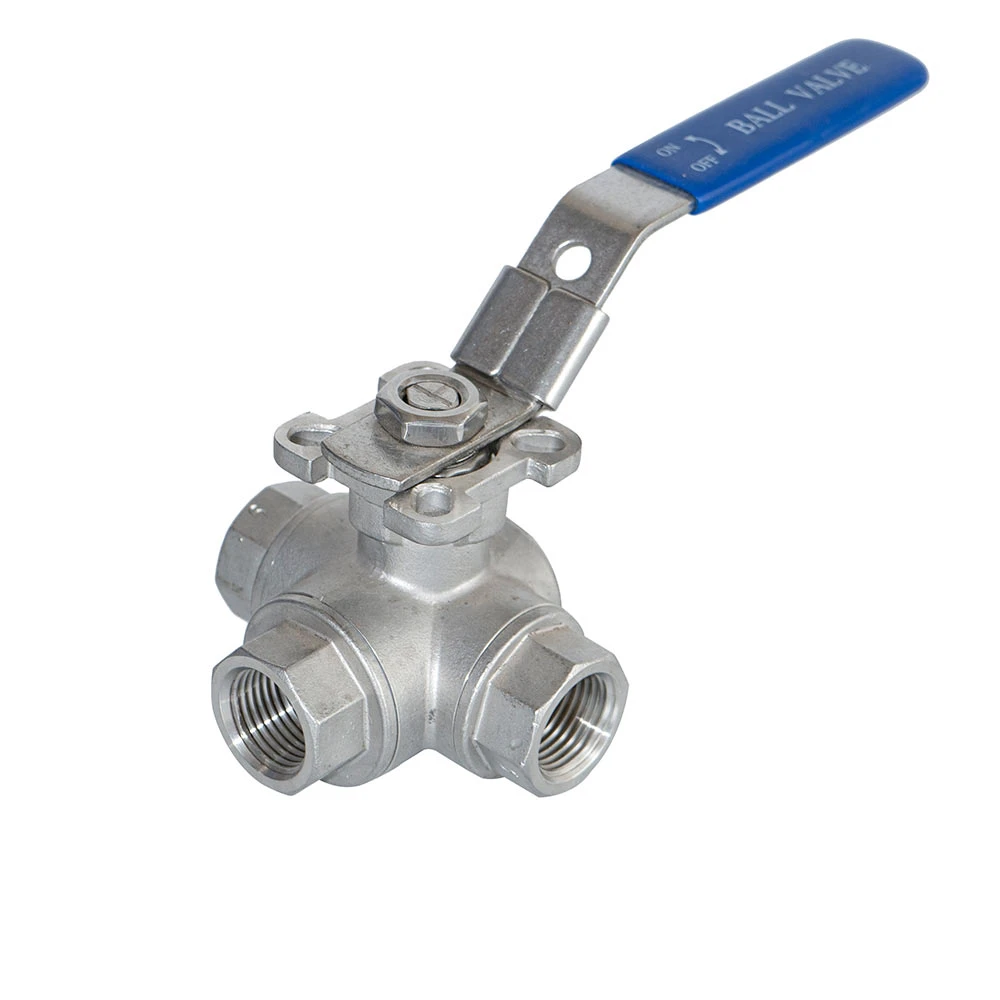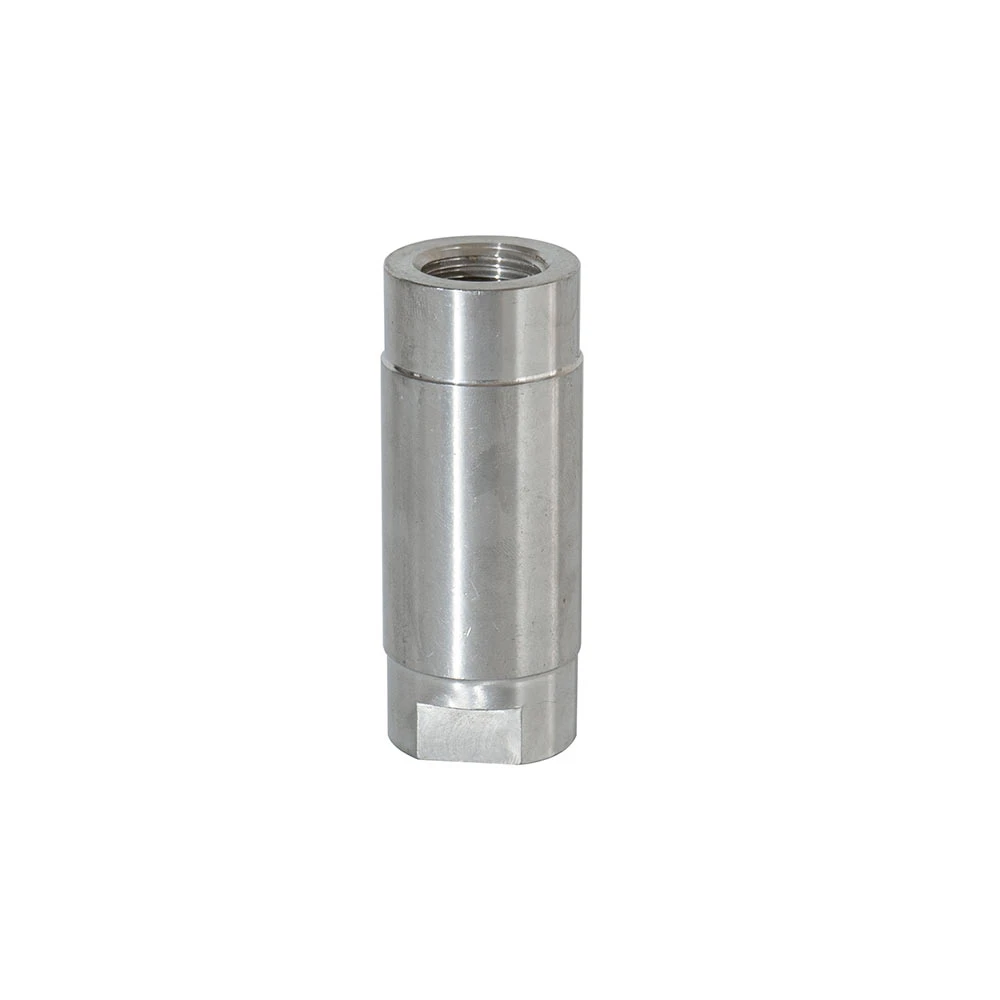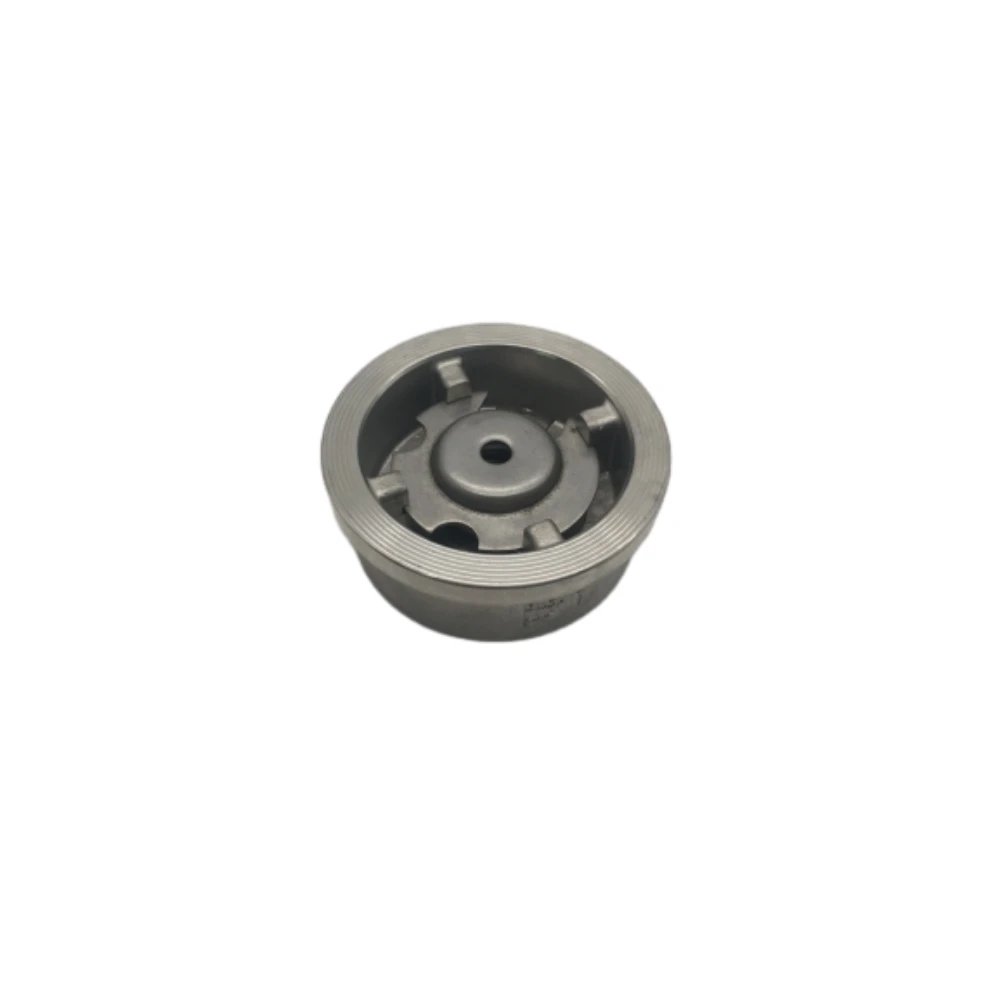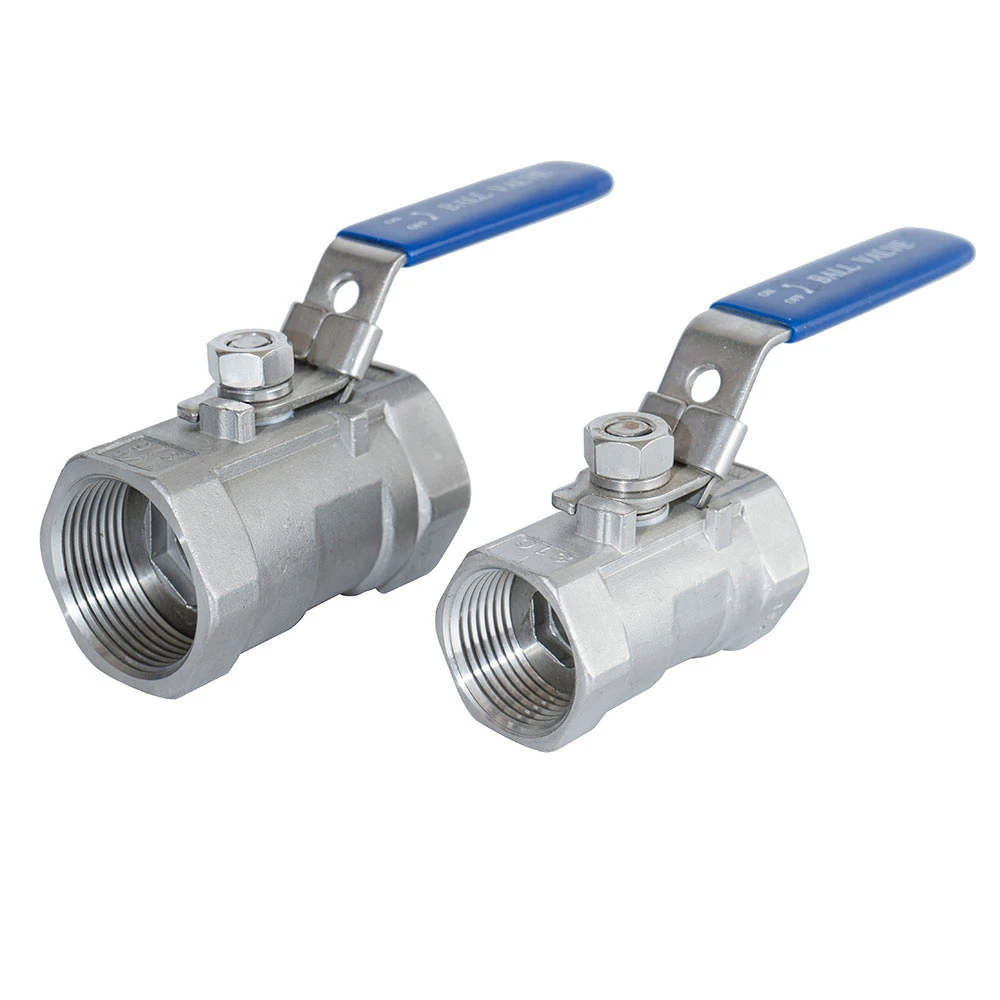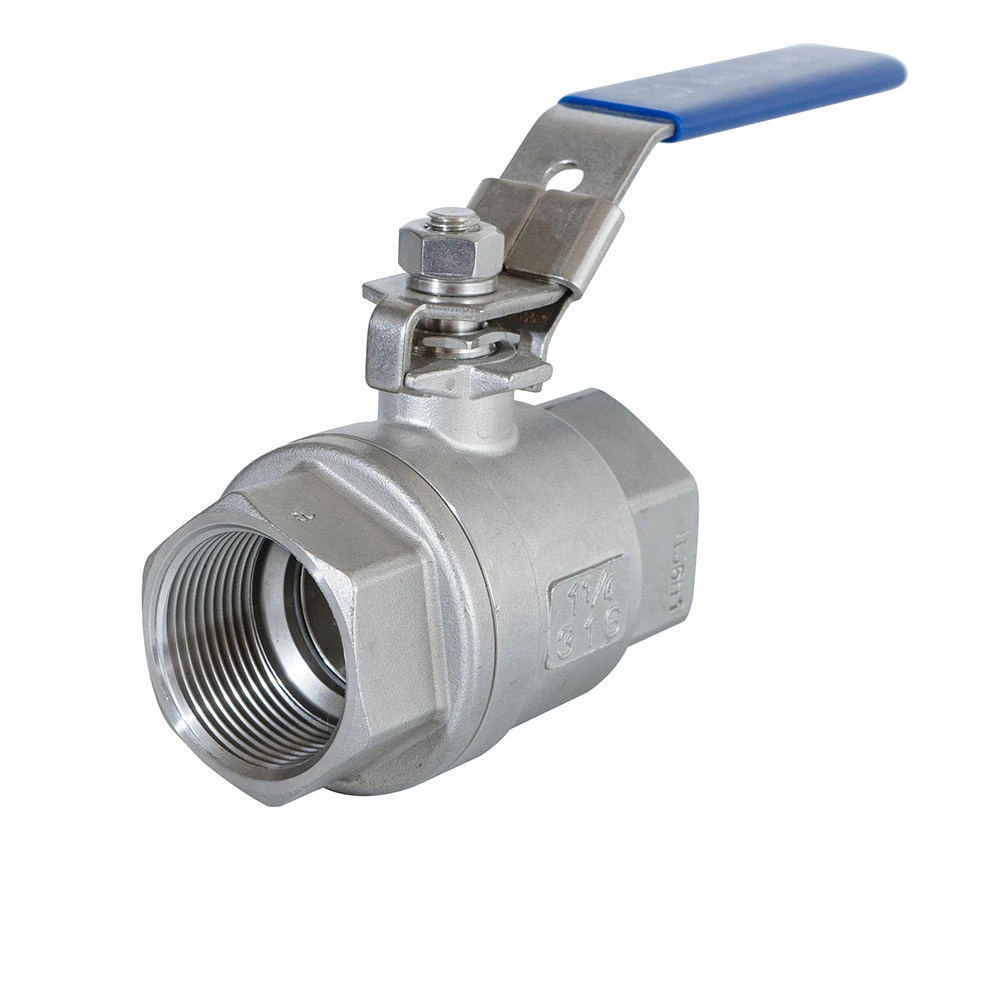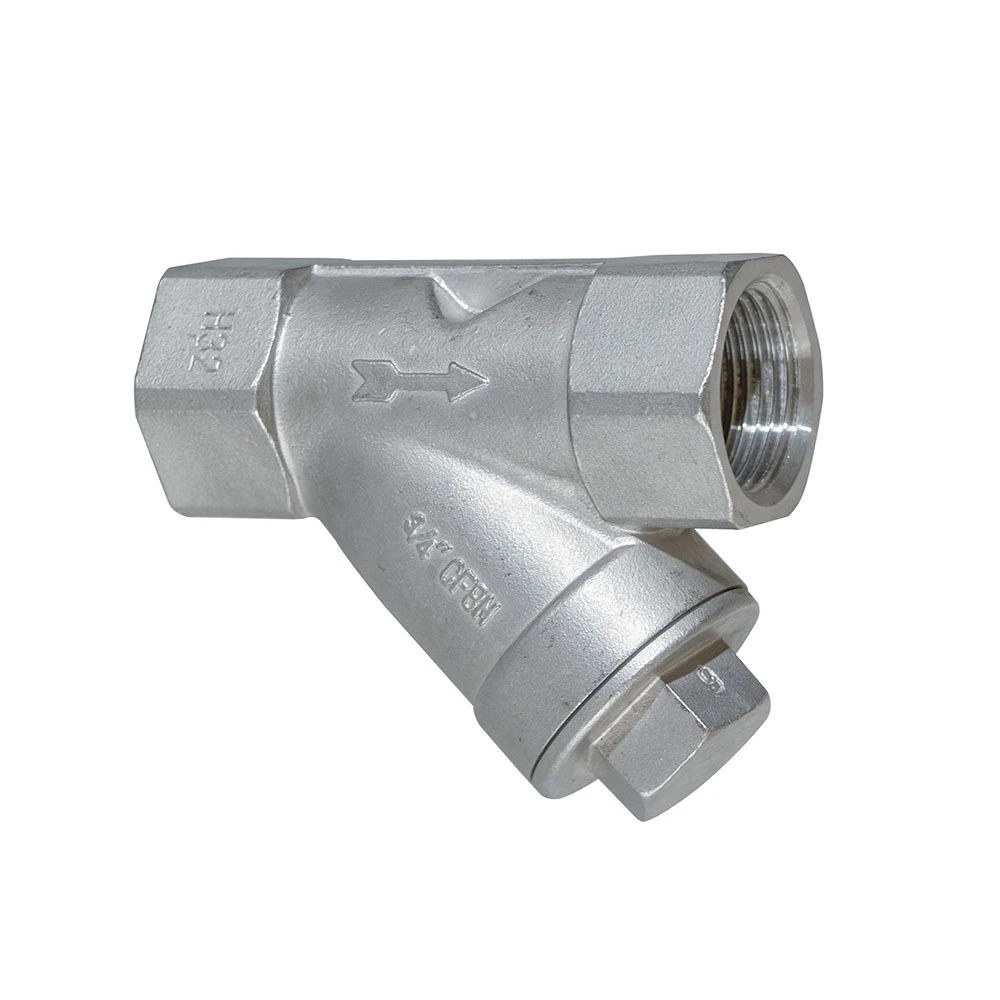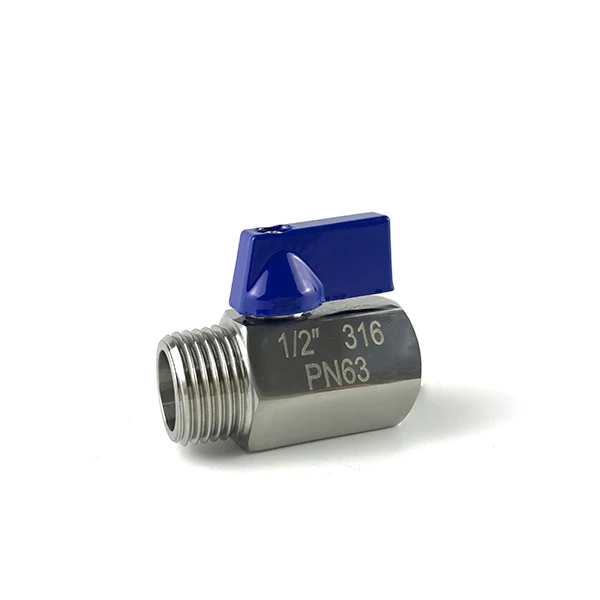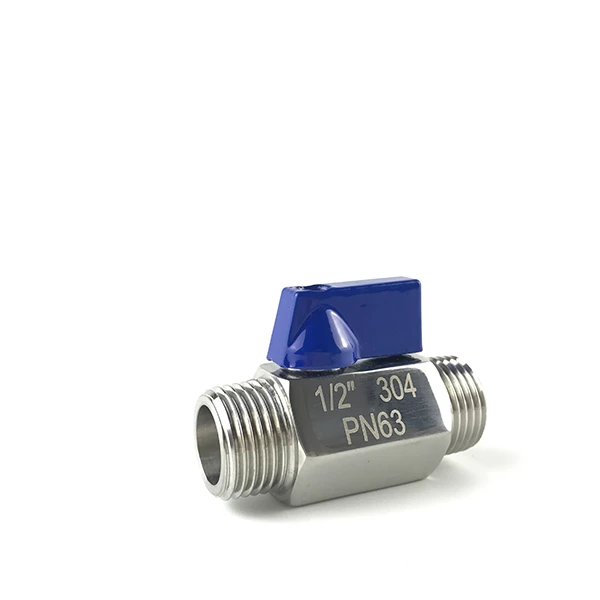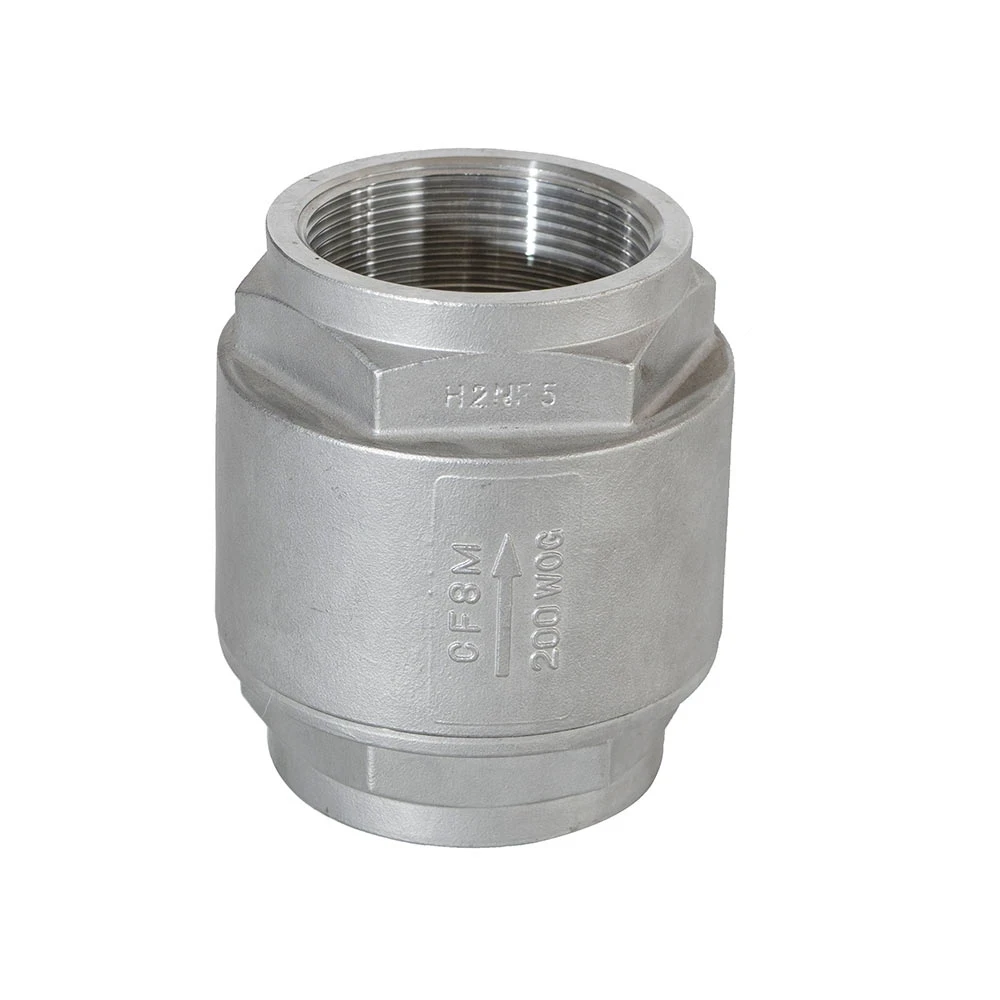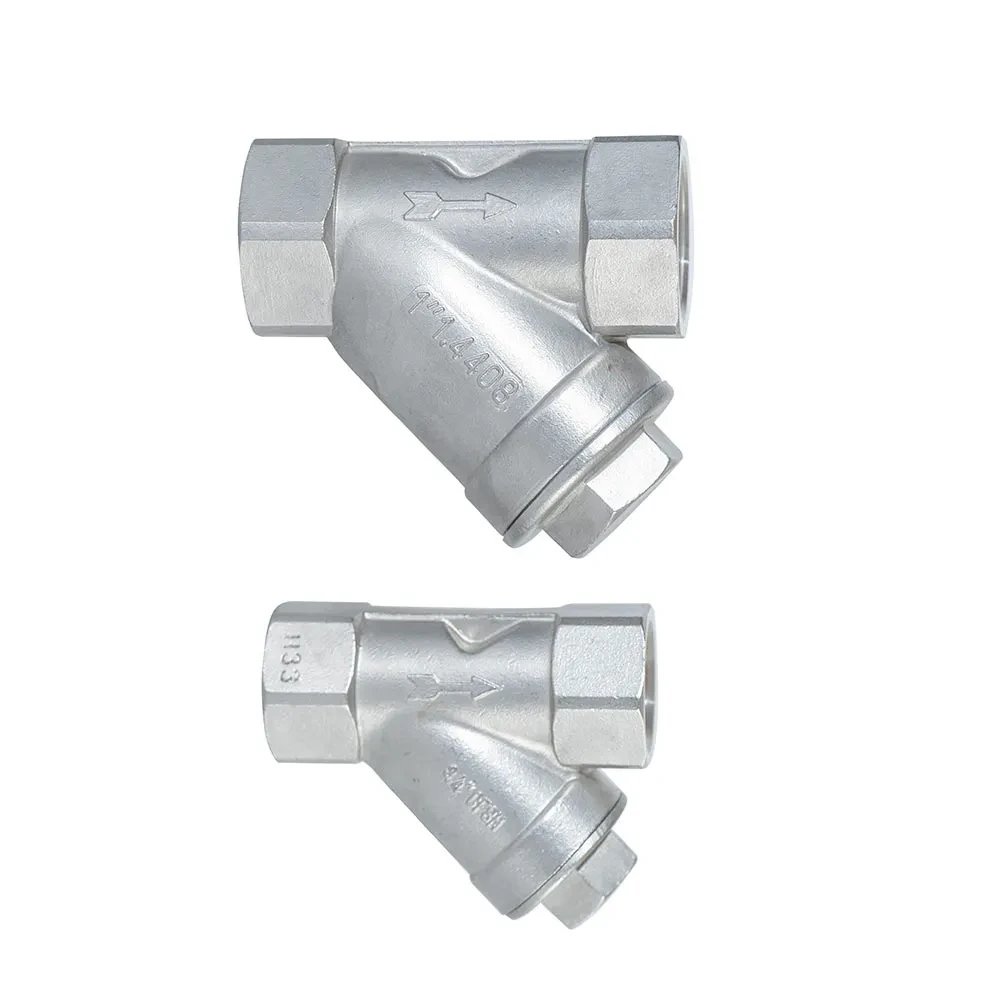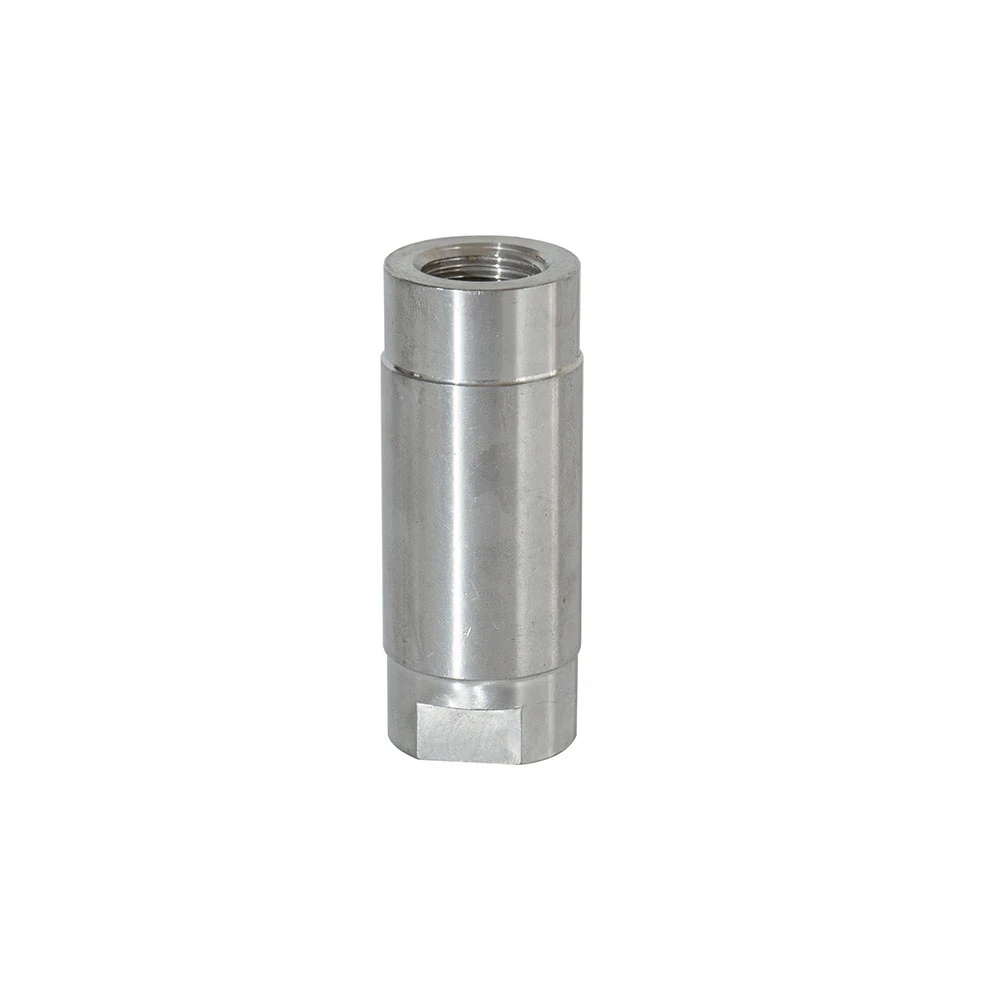In the vast and complex world of industrial fluid dynamics, the humble valve plays an indispensable role. Among the myriad types, the disk check valve stands out for its efficiency, reliability, and compact design. This comprehensive guide will delve into the intricacies of this crucial component, exploring its technical parameters, manufacturing processes, diverse applications, and inherent advantages. We will also discuss industry trends, examine selection criteria, and provide insights into custom solutions and real-world application cases, all while adhering to the highest standards of expertise and trustworthiness.
Industry Trends and the Evolving Landscape of Disk Check Valve Technology
The global industrial valve market is experiencing steady growth, driven by expansion in sectors like oil & gas, water treatment, power generation, and chemical processing. Within this landscape, the demand for high-performance and reliable check valves, particularly the disk check valve, is consistently increasing. Current trends emphasize:
- Sustainability and Energy Efficiency: There's a growing push for valves that minimize pressure drop and reduce energy consumption. Modern disk check valve designs, with their streamlined flow paths, contribute significantly to these goals.
- Advanced Materials: The adoption of exotic alloys (e.g., Duplex, Super Duplex, Hastelloy) and advanced composites for enhanced corrosion resistance and performance in extreme conditions is becoming more common. This directly impacts the durability and applicability of the `check valve disk` itself.
- Digitalization and Smart Valves: While less prevalent for simple check valves, the integration of sensors for predictive maintenance and real-time monitoring is an emerging trend across the valve industry, aiming to optimize system performance and prevent failures.
- Strict Regulatory Compliance: Evolving environmental regulations (e.g., fugitive emissions standards) and safety protocols (e.g., API, ASME) necessitate the development of more robust and leak-proof valve designs.
- Compact Design: Space constraints in modern industrial plants drive the preference for compact and lightweight valve solutions, where the `disk type check valve` excels due to its inherent design.
According to a report by Grand View Research, the global industrial valve market size was valued at USD 77.1 billion in 2023 and is expected to grow at a compound annual growth rate (CAGR) of 4.3% from 2024 to 2030, with check valves forming a significant segment of this growth. This upward trajectory underscores the critical importance of continuous innovation in `check valve disk` technology and overall valve manufacturing.
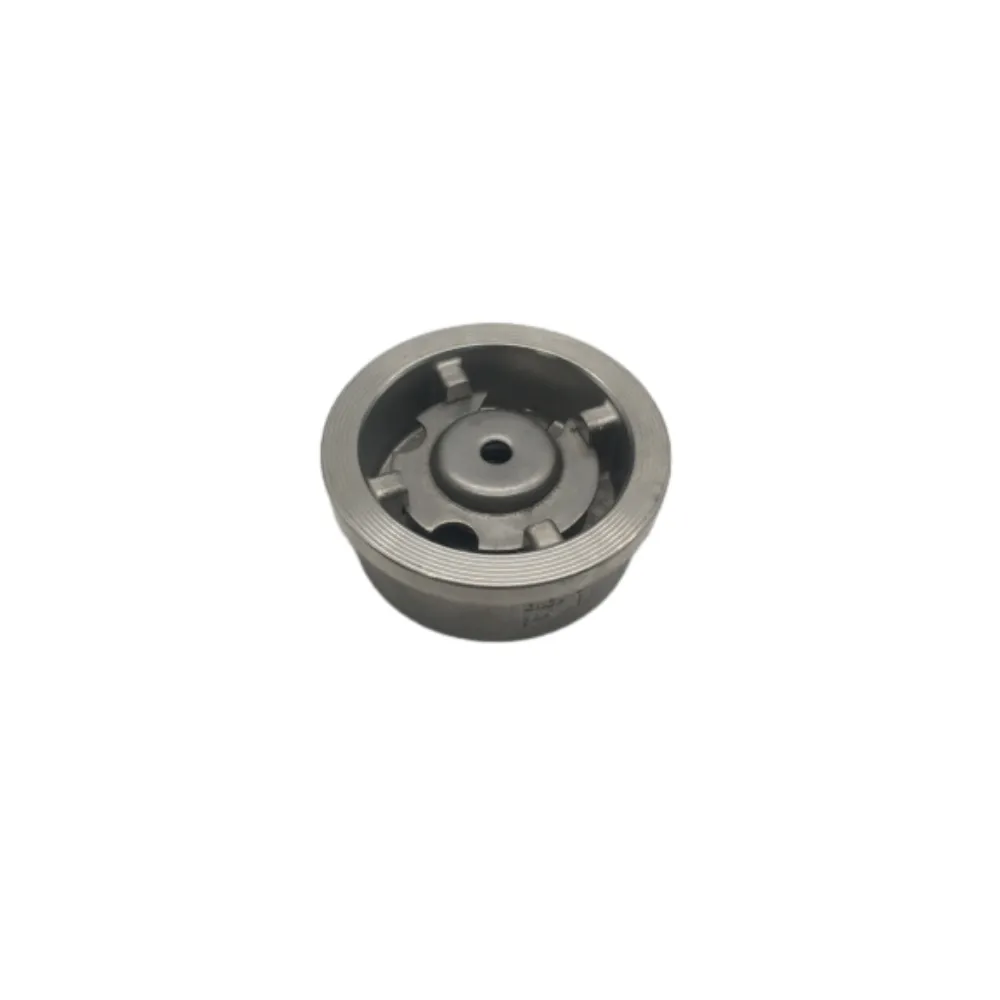
Technical Parameters and Design Principles of the Disk Check Valve
The disk check valve, also known as a wafer check valve or plate check valve, is a crucial component designed to prevent backflow in pipelines. Its operation is elegantly simple yet highly effective: a `check valve disk` pivots or lifts away from the flow when forward pressure is applied and automatically closes against the seat when flow reverses or stops. Key technical parameters define its performance and suitability for various applications:
- Nominal Pipe Size (NPS) / Diameter Nominal (DN): Standard sizes range from small bore (e.g., NPS ½" / DN15) to very large bore (e.g., NPS 48" / DN1200), accommodating diverse pipeline requirements.
- Pressure Rating (Class / PN): Valves are rated according to ASME/ANSI classes (e.g., Class 150, 300, 600, 900, 1500, 2500) or European PN ratings (e.g., PN10, PN16, PN25, PN40, PN64, PN100, PN160). This indicates the maximum allowable working pressure at a given temperature, a critical factor for safety and performance.
- Temperature Range: Material selection dictates the operational temperature range, from cryogenic applications (-196°C) to high-temperature steam services (+550°C).
- Body and Trim Materials:
- Body Materials: Common choices include Carbon Steel (WCB, LCB, LCC), Stainless Steel (CF8, CF8M, CF3, CF3M), Alloy Steel (WC6, WC9, C5, C12), Duplex Stainless Steel (CD3MN, CD4MCuN), and specialized alloys like Hastelloy, Monel, Inconel.
- Trim Materials: Refers to the internal components – the `check valve disk`, seat, and hinge pin. These are often made from corrosion-resistant and wear-resistant materials like 13% Cr Stainless Steel, F304, F316, Stellite overlay, or Tungsten Carbide for enhanced durability and sealing integrity.
- End Connections: Wafer type (most common for disk check valve), Lug type, Flanged (RF, RTJ), Butt-Weld, Threaded (NPT, BSP). The wafer design is particularly popular for its compact size and ease of installation between flanges.
- Sealing Mechanism: Soft seated (e.g., NBR, EPDM, PTFE, Viton) for bubble-tight shut-off in lower pressure/temperature applications, or Metal seated for high-temperature/pressure services and abrasive media.
- Flow Coefficient (Cv): A measure of the valve's flow capacity, indicating how much fluid (in US gallons per minute) will flow through the valve with a pressure drop of 1 psi. A higher Cv indicates less resistance to flow.
- Critical Differential Pressure (CDP): The minimum upstream pressure required to fully open the `check valve disk` against downstream pressure and valve resistance.
- Standards Compliance: Adherence to international standards such as API 594 (Wafer Type Check Valves), API 6D (Pipeline Valves), ASME B16.34 (Valves—Flanged, Threaded, and Welding End), ISO 10434, NACE MR0175 (Sulfide Stress Cracking Resistant Metallic Materials for Oil and Gas Field Equipment).
Typical Disk Check Valve Specifications Table
| Parameter | Description | Typical Range/Value | Impact on Performance |
|---|---|---|---|
| Valve Type | Mechanism for backflow prevention | Disk Check Valve (Wafer, Dual Plate) | Compactness, low pressure drop, rapid closure |
| Nominal Size (NPS/DN) | Pipe diameter matching | 1/2" - 48" (DN15 - DN1200) | Flow capacity, compatibility with piping system |
| Pressure Class (ASME/PN) | Max operating pressure at temp | Class 150 - 2500 (PN10 - PN420) | System pressure rating, safety |
| Body Material | Primary valve housing material | WCB, LCB, CF8M, Duplex SS, Alloy Steel | Corrosion resistance, temperature range, strength |
| Trim Material (Disk & Seat) | Internal wetted parts material | SS 304/316, 13Cr, Stellite, Hastelloy B/C | Wear resistance, corrosion resistance, sealing integrity |
| End Connection | Method of connecting to piping | Wafer, Lug, Flanged (RF/RTJ), Butt-Weld | Installation ease, system integrity, leakage prevention |
| Temperature Range | Min/Max fluid temperature | -196°C to +550°C (-320°F to +1022°F) | Material stability, sealing effectiveness |
| Sealing Type | Mechanism for preventing leakage past disk | Metal Seated, Soft Seated (EPDM, NBR, PTFE) | Tightness of shut-off, wear, temperature limits |
| Pressure Drop | Resistance to flow through valve | Typically low (0.5 to 3 psi depending on size/flow) | Energy efficiency, pump sizing |
| Standards Compliance | Adherence to industry codes | API 594, ASME B16.34, ISO 10434, NACE MR0175 | Reliability, safety, interoperability |
The Art of Precision: Manufacturing Process of the Disk Check Valve
The manufacturing of a high-quality disk check valve is a meticulous process that combines advanced material science with precision engineering. Houde Valve adheres to stringent international standards like ISO 9001 and API specifications to ensure every valve meets the highest performance and reliability benchmarks. Below is a detailed breakdown of the typical manufacturing workflow:
Material Selection and Sourcing
The foundation of a reliable `disk type check valve` begins with selecting the correct raw materials. This involves careful consideration of the fluid medium, operating temperature, pressure, and potential corrosive elements. Materials like carbon steel (ASTM A216 WCB), stainless steel (ASTM A351 CF8M, CF3M), and specialized alloys are sourced from approved, reputable suppliers. Each batch undergoes rigorous material verification testing, including chemical composition analysis and mechanical property testing (tensile strength, yield strength, impact toughness).
Casting or Forging of Body and `Check Valve Disk`
The primary manufacturing method for the valve body and `check valve disk` is either casting or forging.
- Casting: For complex geometries and larger sizes, molten metal is poured into molds. This process is cost-effective for mass production and allows for intricate designs. Quality control during casting involves non-destructive testing (NDT) such as X-ray radiography or ultrasonic testing to detect internal defects like porosity or inclusions.
- Forging: For smaller, higher-pressure applications, the metal is heated and shaped under immense pressure. Forging produces a superior grain structure, enhancing the material's strength, ductility, and fatigue resistance, making the forged `check valve disk` extremely robust.
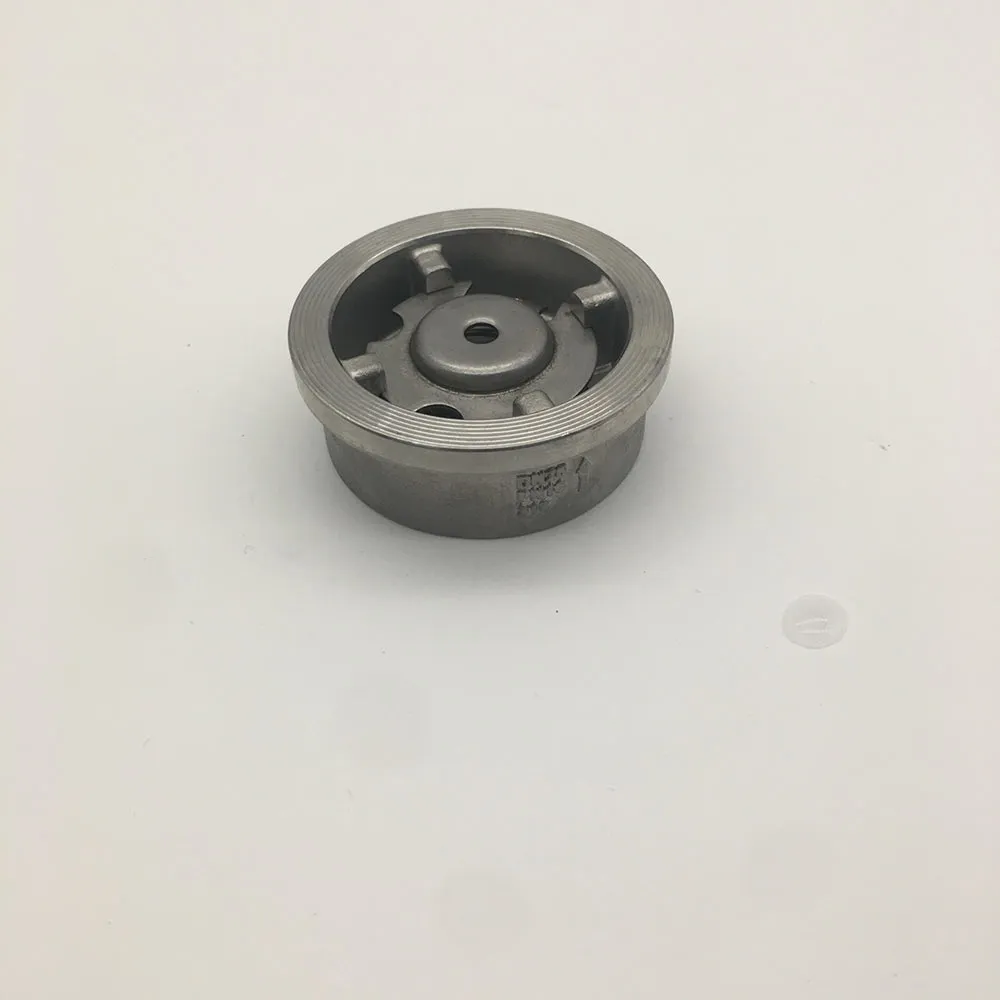
Precision Machining (CNC)
Once the castings or forgings are cooled and cleaned, they undergo precise machining using Computer Numerical Control (CNC) machines. This stage is critical for achieving the exact dimensions, tight tolerances, and smooth surface finishes required for optimal performance of the disk check valve. Key machining operations include:
- Facing and boring of the valve body to create the seating area.
- Machining of the `check valve disk` to ensure a perfect fit with the seat.
- Drilling and tapping for hinge pins, cover bolts, and other attachments.
- Achieving precise concentricity and perpendicularity for proper disk alignment.
Assembly and Trim Installation
After machining, all components are thoroughly cleaned to remove any debris or contaminants. The valve is then meticulously assembled. This involves installing the `check valve disk`, hinge pin, seat ring, and any soft seating materials (e.g., EPDM, PTFE). The precision of assembly is paramount to ensure the disk can move freely while providing a tight seal when closed. For dual plate `disk type check valve` designs, the spring mechanisms are also installed and calibrated.
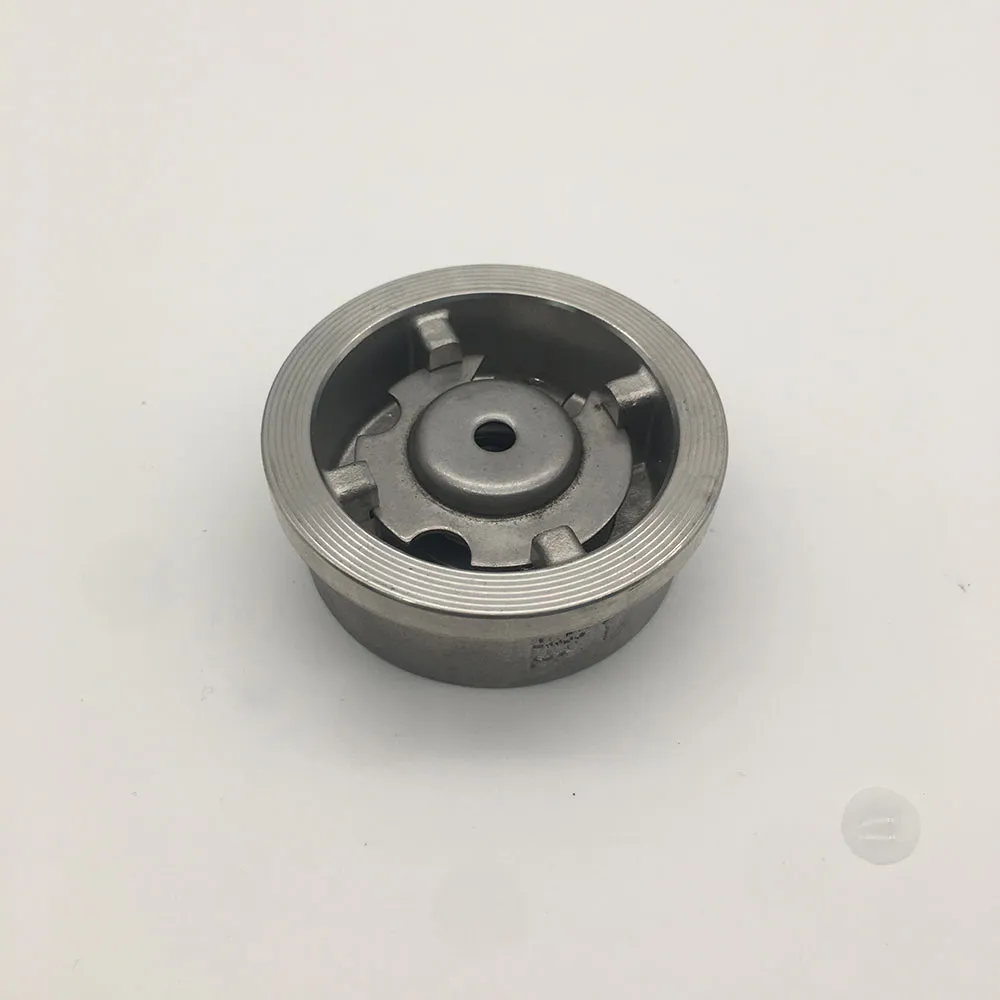
Rigorous Testing and Quality Control
Every disk check valve manufactured undergoes a series of stringent tests to ensure compliance with industry standards and customer specifications. These tests include:
- Hydrostatic Shell Test: The valve body is subjected to a pressure significantly higher than its rated working pressure (e.g., 1.5 times the nominal pressure) to verify the structural integrity of the casting/forging and welded joints.
- Low Pressure Air Seat Test: Air at low pressure (e.g., 80 psi) is applied to the valve to check for bubble-tight sealing across the seat. This is especially crucial for soft-seated valves.
- High Pressure Liquid Seat Test: Water or hydraulic fluid is used to test the seat's sealing capability at the maximum rated working pressure, ensuring the `check valve disk` provides a reliable shut-off under operational conditions.
- Functional Test: The valve is cycled (opened and closed) multiple times to ensure smooth operation of the `check valve disk` and absence of binding or excessive friction.
- Non-Destructive Testing (NDT): Depending on criticality, additional NDT methods like Magnetic Particle Testing (MPT), Liquid Penetrant Testing (LPT), or Ultrasonic Testing (UT) may be performed to detect surface and subsurface flaws.
- Positive Material Identification (PMI): A quick and accurate test using X-ray fluorescence (XRF) or optical emission spectrometry (OES) to verify the alloy composition of critical components against specifications.
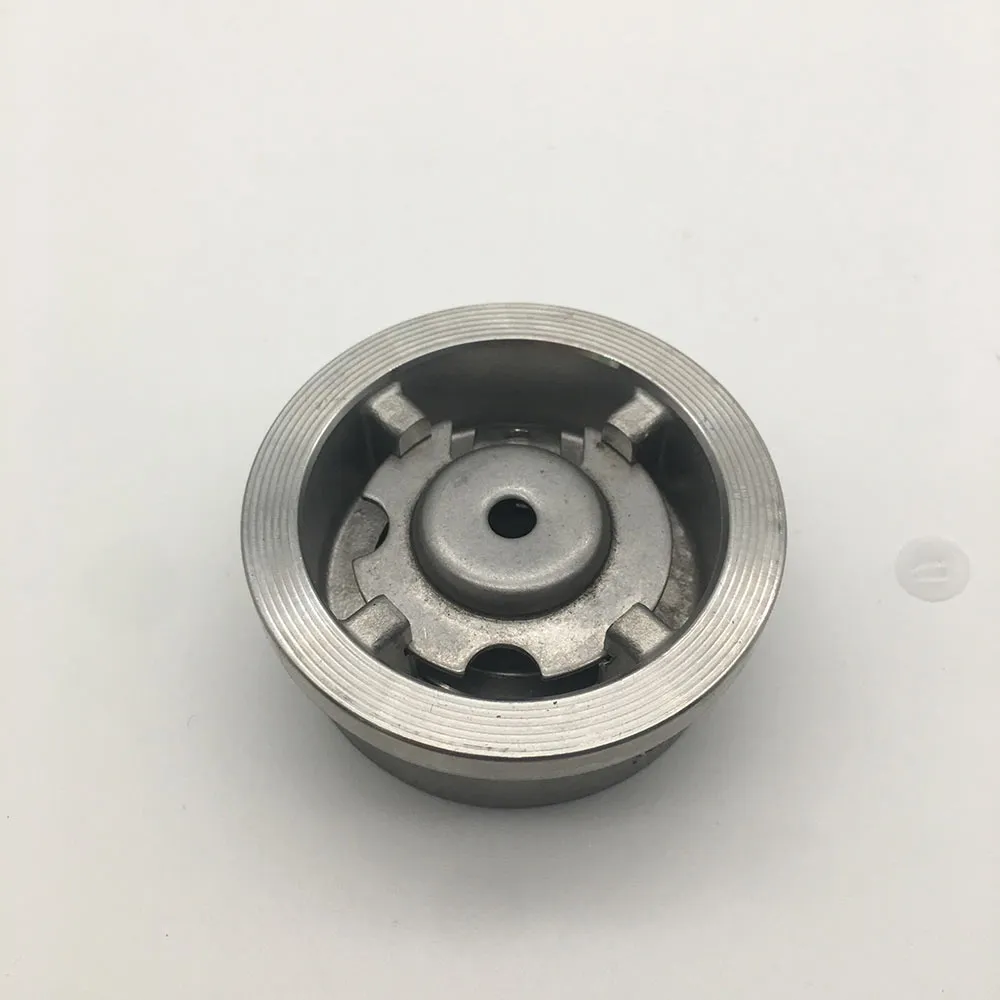
Surface Treatment, Painting, and Packaging
After successful testing, the valve undergoes surface preparation, which may include sandblasting to ensure proper paint adhesion. A protective coating or paint is then applied to prevent corrosion during storage and transit, and to meet aesthetic or functional requirements. Finally, the disk check valve is carefully packaged, often with protective covers on end connections, to prevent damage during shipping. All necessary documentation, including material certificates, test reports, and installation guides, are included.
Diverse Application Scenarios of the Disk Check Valve
The versatility and compact design of the disk check valve make it a preferred choice across a multitude of industries where reliable backflow prevention is paramount. Its wafer-style body allows for easy installation in tight spaces, making it a highly adaptable solution.
- Oil and Gas Industry: From upstream exploration and production to midstream pipelines and downstream refining, disk check valves are used to prevent backflow of hydrocarbons, protect pumps and compressors, and ensure unidirectional flow in various process lines. Their ability to handle high pressures and temperatures with materials like LCB or CF8M is critical here.
- Petrochemical and Chemical Processing: In these demanding environments, the `disk type check valve` made from corrosion-resistant alloys (e.g., Hastelloy, Duplex Stainless Steel) is essential for handling aggressive chemicals, acids, and alkalis, preventing hazardous backflow and cross-contamination.
- Water Treatment and Supply: In municipal waterworks, wastewater treatment plants, and irrigation systems, these valves prevent contaminated water from flowing back into clean lines, protect pumps from reverse flow damage, and ensure efficient distribution. Materials like Ductile Iron with fusion bonded epoxy or Stainless Steel are common.
- Power Generation: In both conventional thermal power plants and nuclear facilities, `check valve disk` technology is employed in steam lines, cooling water systems, and condensate return lines to maintain flow direction and protect critical equipment like turbines and boilers from water hammer.
- HVAC Systems: In heating, ventilation, and air conditioning systems, disk check valves are used in water loops to prevent back siphonage, ensure proper flow to chillers and boilers, and protect circulating pumps.
- Mining and Minerals Processing: Handling abrasive slurries and high-pressure water, robust disk check valves with wear-resistant trims (e.g., Stellite overlay) are crucial for pump protection and flow control in dewatering and process lines.
- Marine and Shipbuilding: In ship piping systems for ballast water, cooling water, and fuel lines, their compact design is highly advantageous where space is at a premium.
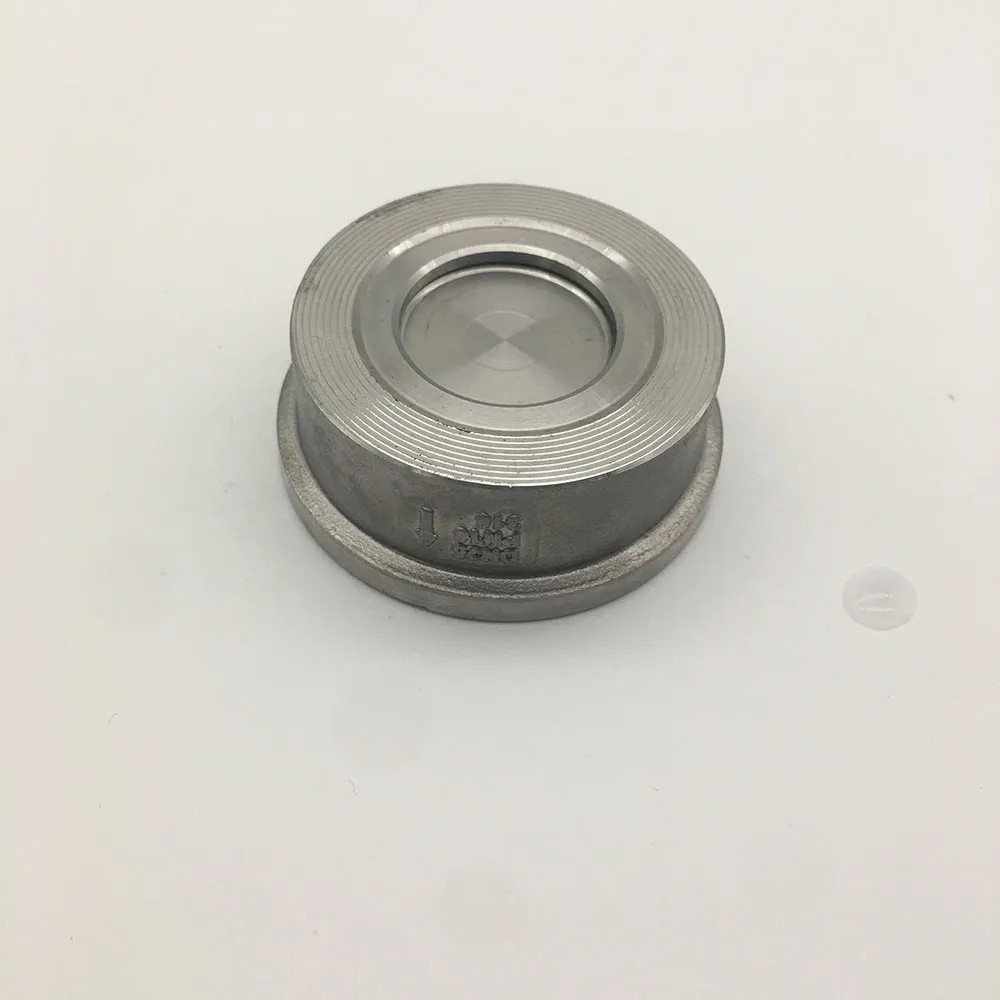
Technical Advantages of the Disk Check Valve
Compared to other check valve types (e.g., swing check, lift check), the disk check valve offers distinct technical advantages that contribute to its widespread adoption and superior performance in many applications:
- Compact and Lightweight Design: The wafer-style construction means it has no flange or bonnet, resulting in significantly reduced face-to-face dimensions and weight. This saves space, reduces pipeline stress, and simplifies installation and removal, leading to lower installation costs.
- Low Pressure Drop: The streamlined flow path and minimal obstruction from the `check valve disk` result in very low pressure drop across the valve when fully open. This translates directly to energy savings, as pumps require less power to move fluid through the system.
- Rapid Closure: The short stroke of the `check valve disk` and often the presence of a spring-assisted closing mechanism enable very quick closure. This rapid response is crucial in preventing or mitigating severe water hammer (pressure surge) effects, thereby protecting piping systems and equipment from damage.
- Versatile Mounting Options: While typically installed in horizontal lines, many disk check valve designs can also be installed in vertical lines (with upward flow), offering greater flexibility in piping layouts.
- Reduced Maintenance: With fewer moving parts and a simple, robust design, the `disk type check valve` generally requires less maintenance compared to more complex valve types, contributing to lower operational costs and increased uptime.
- Cost-Effectiveness: Due to less material usage and simpler manufacturing, wafer `disk type check valve`s are often more economical than their flanged counterparts, especially in larger sizes.
- Non-Slam Operation (for spring-loaded types): The spring-loaded dual-plate `disk type check valve` is specifically designed to close before flow reversal can gain significant momentum, virtually eliminating valve slam and the associated pipe stresses and noise.
Expertise Insight: The efficiency gains from low pressure drop are quantifiable. For example, reducing pressure drop by even 5 psi across a large pipeline can lead to significant annual electricity cost savings for the pumping system, directly impacting a plant's operational expenditure and carbon footprint. A Houde Valve `disk type check valve` is engineered precisely to minimize this energy waste, ensuring optimal fluid dynamics.
Choosing the Right Partner: Manufacturer Comparison and Selection
Selecting the right manufacturer for disk check valves is as crucial as selecting the valve itself. A reputable manufacturer, like Houde Valve, offers more than just products; they provide expertise, reliability, and support. When evaluating manufacturers, consider the following:
- Certifications and Standards Compliance: Look for manufacturers holding ISO 9001 (Quality Management System), API Monogram (for oil & gas applications), CE Marking (for European markets), and compliance with specific material standards (e.g., NACE MR0175 for sour service). Houde Valve proudly adheres to these international benchmarks.
- Experience and Track Record: A manufacturer with a long history and proven track record in the industry indicates stability, deep technical knowledge, and a reliable supply chain. Houde Valve has years of dedicated service in the valve industry, delivering thousands of reliable disk check valve solutions globally.
- Material Traceability: Ensure the manufacturer provides full material traceability (Mill Test Certificates - MTCs) for all valve components, from the body to the `check valve disk` and sealing elements. This guarantees material quality and compliance with specifications.
- Manufacturing Capabilities: Assess their in-house manufacturing capabilities, including casting/forging, advanced CNC machining, and comprehensive testing facilities. This indicates control over the entire production process and consistent quality.
- Quality Control Protocols: Inquire about their QC processes, including NDT capabilities, hydrostatic testing, and seat leakage testing procedures. A rigorous QC regimen ensures defect-free products.
- Technical Support and After-Sales Service: A strong technical support team, prompt response to queries, and comprehensive after-sales service (e.g., spare parts, troubleshooting) are invaluable for long-term operational success.
- Customization Capabilities: Can they offer tailored solutions for specific pressure, temperature, material, or application needs? This is especially important for non-standard requirements.
- Customer Testimonials and References: Real-world feedback from previous clients can offer insights into a manufacturer's reliability, product performance, and service quality.
Tailored Excellence: Custom Solutions for Disk Check Valves
While standard disk check valves meet many industrial needs, specific applications often require bespoke solutions. A flexible and experienced manufacturer like Houde Valve can provide customized `disk type check valve` designs to address unique operational challenges. Customization can involve:
- Special Materials: For highly corrosive or abrasive media, or extreme temperatures, custom alloys (e.g., Hastelloy C-276, Titanium, Zirconium) for the valve body and `check valve disk` can be specified. This includes NACE MR0175 compliant materials for sour gas service.
- Unique Pressure/Temperature Ratings: Designing valves for pressures beyond standard classes or for ultra-low/high temperatures requires specialized engineering and material selection, often incorporating advanced sealing technologies.
- Specific End Connections: While wafer and lug types are common, custom `disk type check valve`s can be designed with unique flange facings (e.g., RTJ for high-pressure sealing), or weld ends for critical applications where leakage must be absolutely minimized.
- Modified Trim Designs: For pulsating flows, very low pressure drop requirements, or to mitigate water hammer, the `check valve disk` design, spring tension, or hinge mechanism can be optimized.
- Coating and Linings: Internal linings (e.g., PTFE, rubber) or external coatings can be applied for enhanced corrosion resistance, abrasion resistance, or specific hygienic requirements.
- Actuation Integration: Although check valves are passive, for certain applications where forced closure or remote monitoring is desired, a custom `disk type check valve` could be integrated with specific sensing points or even a small actuator for testing purposes.
The ability to provide custom solutions demonstrates a manufacturer's engineering depth and commitment to meeting diverse customer needs, enhancing both product experience and trustworthiness.
Real-World Impact: Application Cases of Disk Check Valves
The practical application of disk check valves across industries illustrates their indispensable value and performance in demanding environments. Here are a few representative scenarios:
- Case 1: Protecting Pumps in Municipal Water Systems
A large urban water treatment plant faced recurring pump damage due to sudden power outages causing backflow and water hammer. Traditional swing check valves were too slow to close. By retrofitting their pumping stations with spring-assisted dual-plate disk check valves (DN600, PN16, Ductile Iron with EPDM seats), they significantly reduced the closing time. The rapid action of the `check valve disk` minimized reverse flow, virtually eliminating water hammer incidents and extending pump lifespan by 30%, resulting in substantial maintenance cost savings and improved system reliability.
- Case 2: Ensuring Safety in Offshore Oil Platforms
On an offshore crude oil production platform, critical firewater and cooling water lines required robust backflow prevention in corrosive seawater environments. Compactness was also a key factor due to limited space. High-performance disk check valves made from Super Duplex Stainless Steel (ASTM A890 5A, Class 600, wafer type) were installed. Their superior corrosion resistance and swift, non-slam closure protected sensitive equipment from reverse flow and saltwater intrusion, maintaining operational integrity in a highly demanding and safety-critical application. The low pressure drop of these `disk type check valve`s also contributed to optimizing pump efficiency.
- Case 3: Enhancing Efficiency in Industrial Boiler Systems
A manufacturing facility experienced inefficiencies in their steam condensate return system due to improper check valve performance, leading to steam short-circuiting and increased energy consumption. They replaced outdated check valves with metal-seated disk check valves (NPS 8", Class 300, Carbon Steel with 13% Cr trim) designed for high-temperature steam. The swift and reliable sealing of the `check valve disk` ensured unidirectional flow of condensate, preventing steam loss and optimizing boiler efficiency. This resulted in a measured 5% reduction in fuel consumption, demonstrating clear energy savings.
Frequently Asked Questions (FAQ) about Disk Check Valves
Q1: What is the primary function of a disk check valve?
A1: The primary function of a disk check valve is to allow fluid flow in one direction only and automatically prevent backflow (reverse flow) in a pipeline. It operates passively, without external power, relying on the fluid's differential pressure to open and close its `check valve disk`.
Q2: What are the main advantages of a wafer-style disk check valve compared to other check valve types?
A2: Wafer disk check valves offer several advantages: they are highly compact and lightweight, saving space and reducing pipeline stress; they typically have a very low pressure drop, improving energy efficiency; and their spring-assisted dual-plate design allows for rapid, non-slam closure, which significantly mitigates water hammer and protects piping systems.
Q3: Can a disk check valve be installed in any orientation (horizontal or vertical)?
A3: Yes, most disk check valves, especially the spring-loaded dual-plate designs, are versatile and can be installed in both horizontal and vertical pipelines (with upward flow). This flexibility is a significant advantage in complex piping layouts. Always consult the manufacturer's installation manual for specific guidelines for your particular `disk type check valve` model.
Q4: What materials are commonly used for the `check valve disk` and body?
A4: Common body materials include Carbon Steel (WCB), Stainless Steel (CF8M, CF3M), Alloy Steel (WC6, WC9), and Duplex Stainless Steel. The `check valve disk` and seat (trim) are often made from corrosion-resistant materials like 13% Cr Stainless Steel, 316 Stainless Steel, or Stellite overlays for enhanced wear resistance and sealing integrity. Material selection depends entirely on the fluid, temperature, and pressure requirements.
Q5: How does a disk check valve prevent water hammer?
A5: The non-slam feature, particularly of spring-loaded dual-plate `disk type check valve`s, is key. The springs rapidly assist the `check valve disk` in closing before the reverse flow gains significant velocity, thus preventing the shock wave (water hammer) that occurs when a column of fluid abruptly stops or changes direction. The short stroke of the disk also contributes to this rapid response.
Q6: What industry standards should a high-quality disk check valve comply with?
A6: Reputable disk check valves should comply with international standards such as API 594 (for wafer-type check valves), ASME B16.34 (for flanged, threaded, and welding end valves), ISO 10434, and potentially NACE MR0175 for applications involving sour service (sulfide stress cracking environments). Compliance ensures product quality, safety, and interoperability.
Q7: What is the expected lifespan of a disk check valve?
A7: The lifespan of a disk check valve varies greatly depending on the operating conditions, fluid properties (e.g., abrasiveness, corrosiveness), correct installation, and maintenance. However, a well-manufactured valve from a reputable supplier, made from appropriate materials for the application, can last for many years, often exceeding 10-15 years in typical service, particularly with periodic inspection and minimal wear on the `check valve disk` and seat.
Ensuring Trust: Delivery, Warranty, and Customer Support
At Houde Valve, we understand that product quality extends beyond the manufacturing floor. Trust is built through reliable service, comprehensive support, and clear commitments. Our approach to delivery, warranty, and customer support reflects our dedication to your operational success:
- Delivery Cycle: We maintain a robust inventory of common disk check valve configurations to facilitate quick turnaround for urgent requirements. For custom or large-volume orders, our streamlined production process, combined with efficient logistics planning, ensures competitive delivery times. Typical lead times for standard products range from 2-4 weeks, while complex custom solutions may require 6-10 weeks, depending on material availability and manufacturing complexity. We provide clear delivery schedules and proactive communication throughout the order fulfillment process.
- Quality Assurance and Warranty Commitment: Every disk check valve leaving our facility undergoes rigorous testing and inspection, backed by comprehensive documentation (including MTCs and test reports). We offer a standard warranty of 12-24 months from the date of installation or 18-30 months from the date of shipment, whichever comes first, covering defects in materials and workmanship. Our commitment extends to ensuring your `disk type check valve` performs reliably in its intended application.
- Responsive Customer Support: Our dedicated customer support team is available to assist with technical queries, product selection, installation guidance, and troubleshooting. We provide timely responses to inquiries, ensuring that you have the information and assistance needed to make informed decisions and resolve any issues promptly. Our engineers and sales specialists possess deep knowledge of disk check valve technology and its applications, offering expert advice from initial inquiry to post-installation support.
Choosing Houde Valve means partnering with a company committed to delivering not just a product, but a complete solution built on quality, transparency, and unwavering support.
Conclusion and Citations
The disk check valve is far more than a simple component; it is a meticulously engineered device critical for the safety, efficiency, and longevity of numerous industrial systems worldwide. Its compact design, low pressure drop, and rapid closure capabilities make it an indispensable tool for preventing backflow and mitigating water hammer, directly contributing to energy savings and reduced maintenance costs. From the rigorous selection of raw materials and precision manufacturing processes, including casting, forging, and CNC machining, to stringent quality control and comprehensive testing, every stage ensures the reliability of the `check valve disk` and the overall valve. As industries continue to evolve, demanding higher performance, greater efficiency, and more specialized solutions, the innovation in `disk type check valve` technology remains at the forefront of fluid control engineering.
At Houde Valve, we pride ourselves on our deep expertise, proven experience, and authoritative standing in the valve manufacturing sector, upholding the highest standards of trustworthiness. We are committed to delivering superior disk check valve solutions that meet the complex needs of modern industrial applications, supported by exceptional customer service and robust warranty provisions. The insights and data presented herein underscore the significant impact of choosing the right disk check valve and the right manufacturing partner.
References and Further Reading:
- Grand View Research. (2023). Industrial Valves Market Size, Share & Trends Analysis Report By Material, By Type, By Application, By Region, And Segment Forecasts, 2024 - 2030. Retrieved from https://www.grandviewresearch.com/industry-analysis/industrial-valves-market
- API Standard 594. (2017). Check Valves: Flanged, Wafer, Lug, and Butt-welding Ends. American Petroleum Institute. (Industry standard for check valves).
- ASME B16.34. (2020). Valves—Flanged, Threaded, and Welding End. American Society of Mechanical Engineers. (Standard for valve design and materials).
- Valve Magazine. (Ongoing). Industry News & Technical Articles on Valve Technology. Retrieved from https://valvemagazine.com/ (A leading industry publication for valve professionals).
- Flow Control. (Ongoing). Articles on Fluid Handling and Control Technologies. Retrieved from https://www.flowcontrolnetwork.com/ (Provides technical insights into various flow control devices, including check valves).

